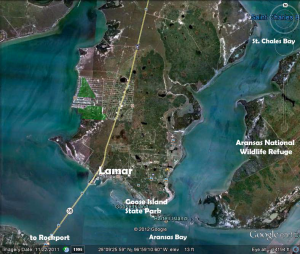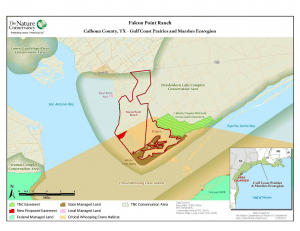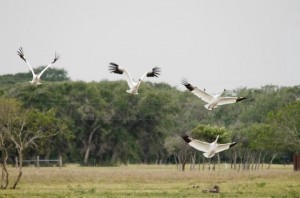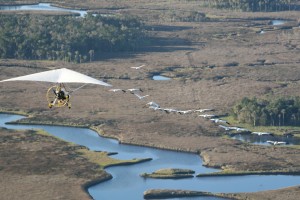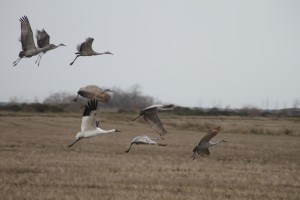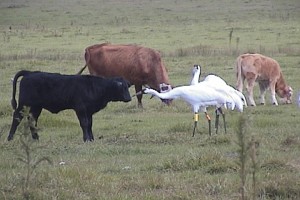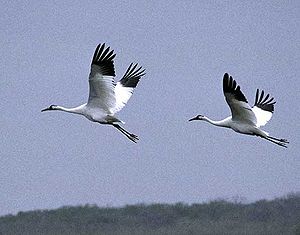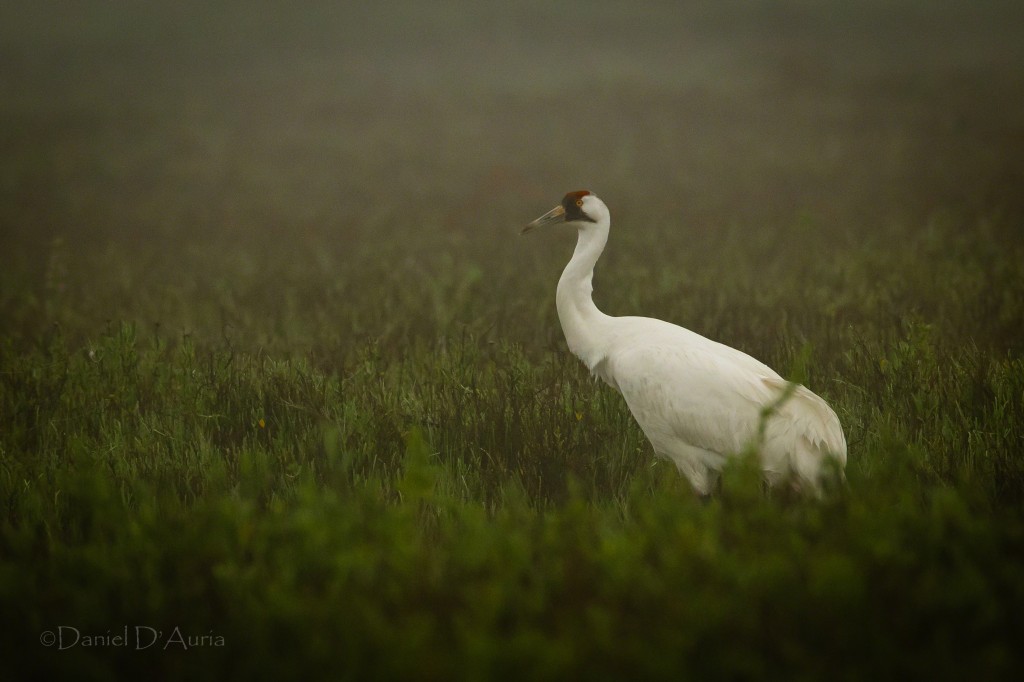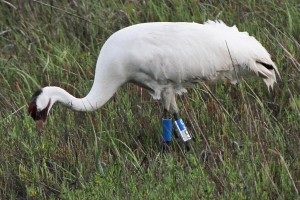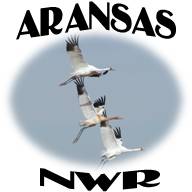by Whooping Crane Conservation Association
Endangered whooping cranes now have an additional 278 acres of habitat on which they can live during winter. The 278 acres involved two critical habitat acquisition projects for North America’s last wild flock of migratory whooping cranes. In one project, three conservation groups partnered to purchase the privately-owned 178 acres in Holiday Beach area north of Rockport, Texas. Sale of the property closed last week. The endangered whooping crane flock spends the winter in the area and some have often been observed on this property. This important property purchase was coordinated by Coastal Bend Bays & Estuaries Program, Whooping Crane Conservation Association and Texas Parks and Wildlife Department.
Whooping Crane Conservation Association President Lorne Scott explained that wintering habitat in Texas is more confined and threatened than the Canadian breeding grounds. He also said, “The wintering habitat is so scarce and so unavailable, anything that does come up for sale and has potential, we try to secure it.”
Scott stated that the whooping crane has become a symbol of wildlife conservation in North America. He counseled that, “The whooping crane saga has shown that after decades of work and partnerships, we can save a species and work for conservation.” Scott believes, “We have an obligation to make every effort to secure all our native flora and fauna.”
Coastal Bend Bays & Estuaries Program received the funds for the important 178 acre purchase through the U.S. Fish and Wildlife Service’s Endangered Species Recovery Land Acquisition Grant Program, administered by the Texas Parks and Wildlife Department. Matching funds were provided by the Whooping Crane Conservation Association. The Nature Conservancy assisted in the property purchase. CBBEP property manager Jake Herring said “The acquisition of this property is important to CBBEP because it is occupied whooping crane habitat.”
In a second project, The Nature Conservancy made known the protection of more than 100 additional acres of whooping crane winter habitat. With funding assistance from Whooping Crane Conservation Association and U.S. Fish and Wildlife Service, the Conservancy purchased a conservation easement on Falcon Point Ranch in Calhoun County, Texas. The Conservancy purchased the conservation easement for $605,000 with funding from the United States Fish and Wildlife Service, a $200,000 grant from the Whooping Crane Conservation Association and funds from private donors and foundations.
Falcon Point Ranch is located in a coastal region known as Welder Flats.
Whooping crane habitat Falcon Point Ranch, Texas
Today scientists estimate that at least 10 percent of the remaining flock (approximately 25 – 30 birds) winters here. The topography of the property and its waterfront views on San Antonio Bay made it a prime target for development.
“The owners of Falcon Point Ranch have been working to conserve this property for more than five years,” said Bill Ball a representative of the ranch. “It is very exciting to see this important project come to fruition and to know that this truly special place will be protected.”
Ecologists worried that the development of the ranch would not only compromise important habitat on the property, it would compromise surrounding conservation lands as well, including properties the Natural Resources Conservation Service (NRCS) division of the USDA has protected within the last three years.
“NRCS is proud to be a part of this regional effort to protect and restore vital Texas wetlands, for not just the incredibly rare whooping crane but all wetland wildlife species,” said Claude Ross, NRCS Program Manager. “Working with the local landowners, NRCS has worked to protect and restore more than 11,000 acres of habitat in Welder Flats. The Nature Conservancy’s easement on Falcon Point Ranch will help safeguard those investments.”
“Limited and threatened wintering habitat on the Gulf Coast is one of the greatest challenges facing North America’s tallest birds, said Lorne Scott, president of Whooping Crane Conservation Association. “The WCCA congratulates The Nature Conservancy for leading efforts in securing the Falcon Point Ranch.”
The whooping crane population, which breeds in Canada and then migrates 2,400 miles south to the Texas Gulf Coast, declined from an estimated 1500 to just 15 birds between 1850 and 1945. Since then, cooperative conservation efforts between the U.S. and Canada have increased the population twentyfold. Today there are an estimated 300 wild cranes in North America that migrate between Aransas National Wildlife Refuge in Texas to Wood Buffalo National Park, Canada.
“North America all but lost one of its most iconic species,” said Laura Huffman, state director of The Nature Conservancy in Texas. “Although the whooping crane is slowly rebounding, it is still a precarious situation given our state’s growing water challenges and projected growth. If we want our children and grandchildren to experience this majestic creature, conservation efforts to safeguard its habitat aren’t just important, they are absolutely essential.”
The properties now-protected by these two projects will provide important additional winter habitat for the endangered whooping cranes.
